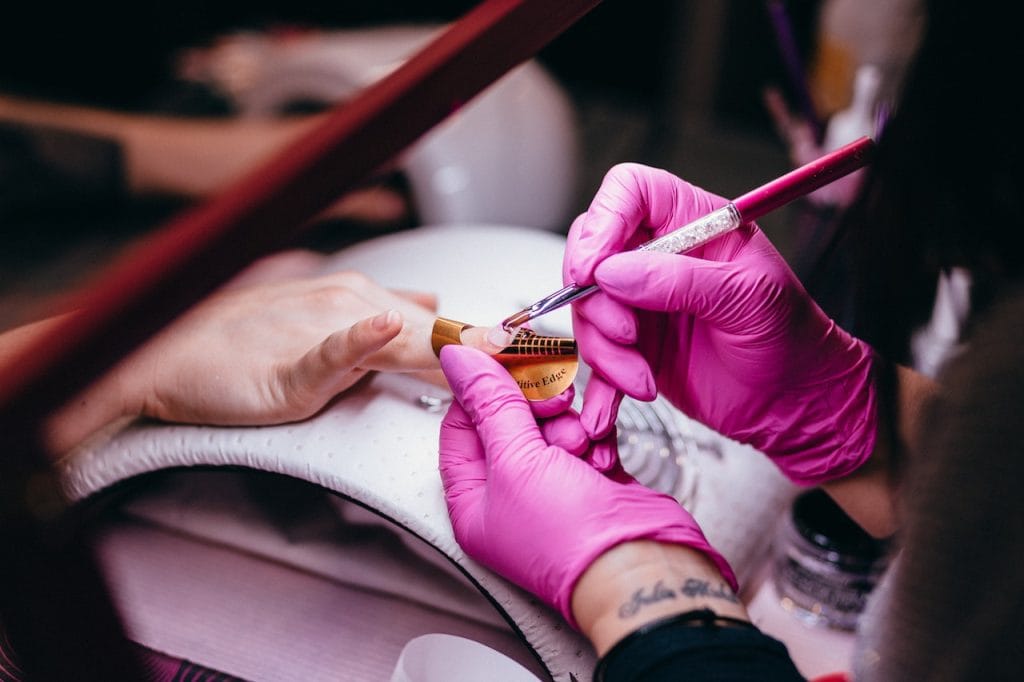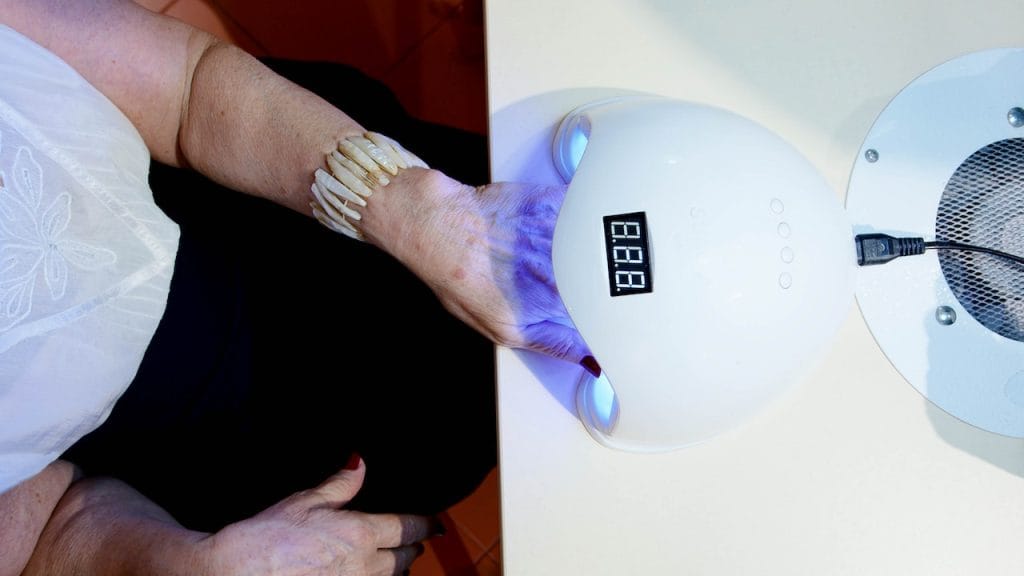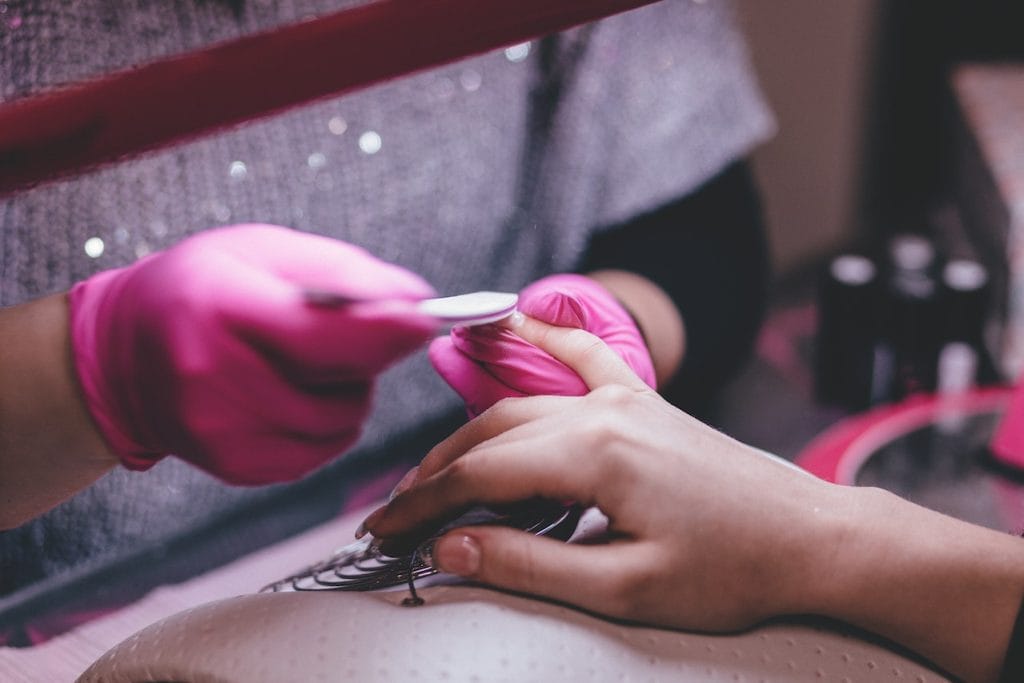Many people are afraid to do a manicure with gel polish, since ultraviolet lamps are used to cure it, and this allegedly can cause skin cancer. We decided to check whether these fears were justified.
The fact that manicure using UV lamps is harmful to health, provokes cancer and even damages DNA, in January 2023 reported many Russian media (for example, “Snob", "Gazeta.ru", "Moskovsky Komsomolets", "Channel 5", TV channel "World", etc.), women's And popular science portals, sites about medicine. They write about the potential danger of such a procedure users social networks And blogging platforms. Service visitors are also interested in this questions And answers.
Among the services of beauty salons, manicures with long-term coated - gel polish (a material made from a mixture of gel and pigment, for curing which UV or LED lamps are used). Sometimes it is colloquially called shellac, but this is a mistake. Shellac (Shellac) is a product of the CND company, the first coating of this type to appear on the market in 2009. Another type of manicure that requires a lamp, especially an ultraviolet one, to fix it is gel manicure. build-up nails (not to be confused with gel polish, these are different procedures). As part of such funds located a photoinitiator component (for example, benzoyl peroxide), which, under the influence of light, converts liquid methacrylate - another component of gel polishes - into a solid polymer in seconds.
The reason that in January 2023, many major Russian and world media became interested in the connection between the use of manicure lamps and the development of skin cancer was a new study, conducted by scientists from the University of California at San Diego and the University of Pittsburgh (USA). They took fibroblasts (a type of cell responsible for the formation of connective tissue) of a mouse embryo, as well as fibroblasts from the foreskin and epidermal keratinocytes (the main type of cell in the top layer of skin) of humans and exposed them to ultraviolet lamps - the kind used in nail salons. The duration of exposure was up to 20 minutes, the cells were irradiated from one to three times. Some of the cells that were subjected to triple irradiation were subjected to the procedure for one day with an hour break, the other part - once over three days. It turned out that a single 20-minute irradiation led to the death of 20-30% of any type of cells, and a three-time exposure led to the death of 65-70%.

In addition, irradiation of cells with such a lamp damages DNA, stated Lyudmil Alexandrov, one of the authors of the study. Moreover, some of these damages were not restored over time and the DNA molecule mutated further with each subsequent exposure to the lamps. Scientists have noticed that such exposure can cause dysfunction mitochondria (elements of the cell that break down nutrients and help it “feed”), which can also lead to additional mutations. The same mutation patterns have previously been seen in skin cancer patients.
But if lamps are so harmful, how come they are widely used in salons? It is known that ultraviolet (both natural and emitted by devices) can indeed be carcinogenic to humans. However, the US Food and Drug Administration (FDA) believes Gel polish lamps are low-hazard if used according to the instructions - usually no more than ten minutes on each hand per session. Cancer Council (Australia) reportsthat at the moment there are no serious studies of ultraviolet lamps that would prove the connection between their use during manicures and the development of cancer. In addition, experts add, as a rule, the radiation level of such lamps is low and the exposure time is short. Skin Cancer Foundation (USA) emphasizesthat the radiation of even the most intense manicure lamps is much lower than those used for tanning in solariums. And the authors of the study, which was recently reported by many media, notethat the results of the experiment on cells are not entirely representative of real human skin, where at least there is a keratinized layer of the epidermis that protects cells from ultraviolet radiation. So there is no reason to think that one, even 20-minute manicure session using a lamp will kill 30% of the skin cells on the hand.
The mentioned study was carried out, as they say, in vitro (from the Latin “in glass”, that is, in a test tube). Unlike in vivo studies (that is, in a living organism), this type allows you to study cells (or any other tissue) in detail, without any distractions, but does not allow you to get a complete picture of the reaction of an entire living being, since they cannot reproduce the conditions occurring inside the organism. Therefore, the results of such tests should be approached with caution, since there is no guarantee that the result obtained outside the body will be also valid for a living being. Our fellow fact checkers have already exposed some fakes during the coronavirus pandemic, when drugs that showed some effectiveness in vitro were credited with being able to treat the virus in vivo.
There are several varieties skin cancer - depending on which cells are affected by it. The most common of them:
- basal cell carcinoma - uncontrolled growth basal cells in the top layer of skin (epidermis). This is the most common form of skin cancer;
- squamous cell carcinoma - malignant tumor epidermal keratinocytes extending into the dermis;
- melanoma is a cancer that develops from melanocytes, skin cells that produce melanin (the pigment that gives skin its color). The most dangerous of these three species.

In 2012, specialists from the Institute of Cellular Medicine at the University of Newcastle (UK) built a mathematical model to calculate how many women would need to have their nails manicured using ultraviolet lamps every two to three weeks in order for at least one of them to develop squamous cell carcinoma of the skin on the back of their skin as a direct result of these treatments. The model took into account age, regularity of UV exposure, and also compared the risk of developing cancer from using such lamps with the risk from simply being in the sun. The researchers concluded that the type of skin cancer they were interested in would develop in only one in tens or even hundreds of thousands of women who regularly get such manicures, so the risk is very low and “probably acceptable for most women.”
American experts from Rapid Precision Testing Laboratories with the help spectral weighting (measurements of the biological effects that sunlight or artificial ultraviolet light has on people or the environment) according to the International Commission on Illumination method compared Risks of developing non-melanoma skin cancer from the use of nail lamps and from exposure to sunlight (when the sun is directly overhead and when the rays fall at an angle). The researchers studied six different lamp models of varying wattages. For equivalent exposure times, the risk from overhead sunlight was found to be 11 to 46 times (depending on the device model) higher, and from rays striking the skin at an angle 3 to 12 times higher than from manicure lamps.
In 2020, American dermatologists conducted a systematic review medical literature about patients who had previously had manicures using ultraviolet lamps with melanoma or non-melanoma cancers on the dorsum of the hands and nails matrix (the place where the nail “emerges”). They searched for patients under 40 years of age in the Pubmed database of scientific publications, as well as using the program SEER (The Surveillance, Epidemiology, and End Results) analyzed incidence rates of cutaneous melanoma in people under 39 years of age from 1975 to 2016 and trends in melanoma incidence in patients of all ages from 2007 to 2016. As a result, they did not find a single documented case in which a patient under 40 years of age regularly received gel manicures and had nonmelanoma skin cancer or melanoma on the back of the hands or nail matrix. The SEER program, used to analyze trends in melanoma incidence, found virtually no changes among patients under age 65. Having studied data from previous studies, experts came to the conclusion that there is practically no carcinogenic risk from the use of such lamps.
However, several cases are still known of skin cancer on the back of the hands in people after they regularly did manicures using ultraviolet lamps. Yes, two female patients with squamous cell carcinoma there were no other significant risk factors such as hereditary predisposition, regular work outdoors, etc. However, “after” here does not necessarily mean “as a result of”: the authors of the article who spoke about these cases themselves emphasize that it is impossible to draw any convincing conclusions from them. Fixed Another case of skin cancer in a patient who had her nails done every two to three weeks for 18 years. Like the previous ones, she had no family history of cancer, but in addition to manicures, she also often went to the solarium, so here too it is difficult to establish a cause-and-effect relationship.

At the same time, of course, it is worth considering that different beauty salons have lamps of different brands, which may differ in power, and therefore have a different effect. Thus, in 2014, American dermatologists compared radiation emitted by lamps in 16 different salons, with ultraviolet energy density causing DNA damage (600 kJ/m2), and found that only 8 to 208 sessions (depending on the type of lamp) are enough to cause harm to keratinocyte cells. It sounds scary, but in fact, the incidence of DNA damage caused by exposure to natural cellular metabolites is reaches, according to some estimates, tens of thousands of events per day for each cell. In other words, approximately every 9 seconds. DNA is damaged in the process of life. But the good news is that our bodies are capable of naturally repairing their DNA. Cancer can develop if the DNA's ability to repair itself is reduced due to hereditary mutations (which is why family history is taken into account in many studies) or, for example, if the damage is so frequent and severe that the body does not have time to cope with it and it begins to accumulate. So despite the fact that in some cases the DNA was damaged after the eighth manicure session, this does not at all indicate a risk of developing cancer. The researchers note that while the risk of repeated manicures using lamps remains unknown because the study did not include human participants, the researchers' findings suggest that even with repeated repetitions of the procedure, the risk of developing cancer remains small.
Many salons now use LED (light emitting diode) lamps instead of UV lamps, and some think they are safer. However, experts emphasizethat both of these types emit ultraviolet radiation, and, oddly enough, LED - even in larger quantities, but due to this the varnish hardens faster and the exposure time is reduced.
Thus, there is not yet sufficient evidence that regular use of ultraviolet lamps for manicures significantly increases the risk of developing skin cancer. At the same time, many specialists notethat in order to finally put an end to this issue, additional research is needed. In addition, it matters how often you do such a manicure - if a couple of times a year, then They say experts, there is nothing to worry about, but if every week, it may be worth taking precautions. About this also worth thinking about those who have increased sensitivity to UV rays - for natural reasons or as a result of taking any medications. To reduce the risk of any negative effects of ultraviolet lamps on the skin, experts recommend Apply waterproof sunscreen with SPF 30 or higher to your hands (or feet if you're getting a pedicure), or wear gloves with only your fingertips exposed.
Most likely not true
Read on the topic:
- Are metal detectors really dangerous to your health?
- Is it true that burnt food causes cancer?
- Is it true that deodorants and antiperspirants containing aluminum cause cancer?
- Is it true that wearing a too-tight bra causes breast cancer?
If you find a spelling or grammatical error, please let us know by highlighting the error text and clicking Ctrl+Enter.






